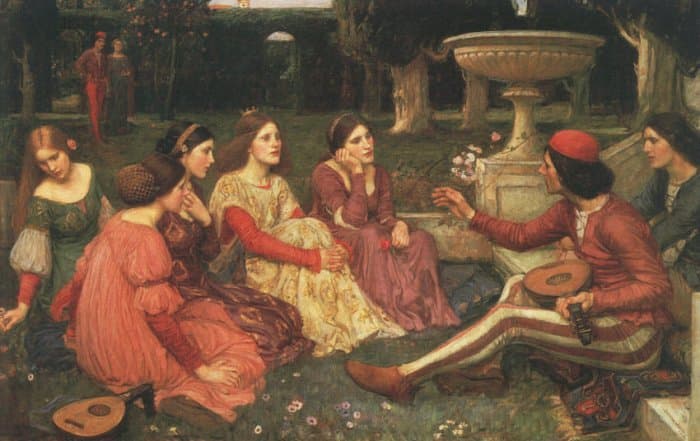A Tale from the Decameron

Date created: 1916
Giovanni Boccaccio wrote The Decameron between the years 1348-53. The work is regarded as his masterpiece, and, stylistically, it is the most perfect example of Italian classical prose, and its influence on Renaissance literature throughout Europe was enormous.
The Decameron begins with the flight of 10 young people (7 women and 3 men) from plague-stricken Florence in 1348. They retire to a rich, well-watered countryside, where, in the course of a fortnight, each member of the party has a turn as king or queen over the others, deciding in detail how their day shall be spent and directing their leisurely walks, their outdoor conversations, their dances and songs, and, above all, their alternate storytelling. This storytelling occupies 10 days of the fortnight (the rest being set aside for personal adornment or for religious devotions); hence the title of the book itself, Decameron, or "Ten Days' Work".
The stories thus amount to 100 in all. Each of the days, moreover, ends with a canzone (song) for dancing sung by one of the storytellers, and these canzoni include some of Boccaccio's finest lyric poetry. In addition to the 100 stories, Boccaccio has a master theme, namely, the way of life of the refined bourgeoisie, who combined respect for conventions with an open-minded attitude to personal behaviour.
Source: Encyclopedia Britannica